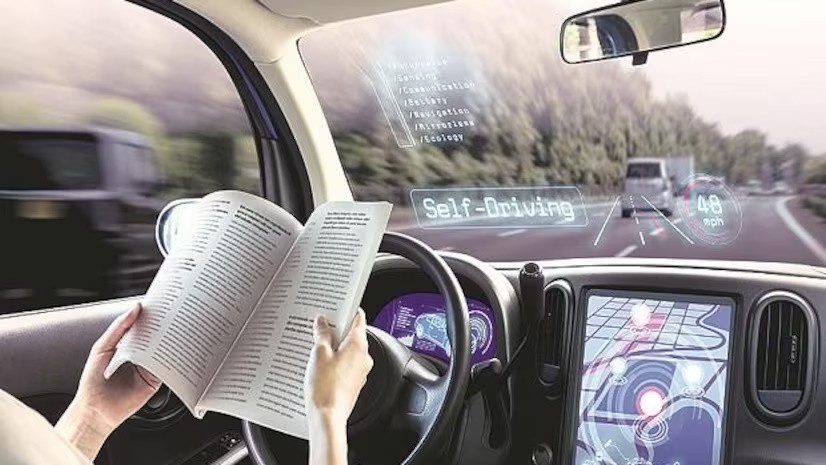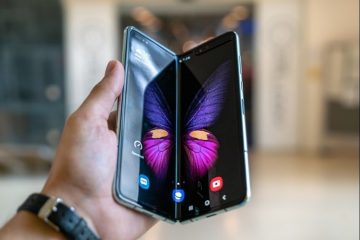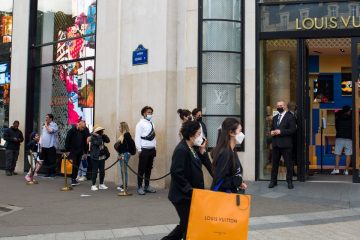Possible Workplace Revolution Coming From Self-Driving Cars

The CEO of BMW Group Designworks pulled over to a rest area while the sound of rushing traffic filled the air, and then he started talking on the phone.
Holger Hampf, whose unit is internally referred to as “architects of the future,” says, “I can’t concentrate on driving if I’m talking.” He claims that this rest stop is a perfect illustration of how things will evolve in the years to come. When autonomous vehicles are a reality, CEOs will have the freedom to work from anywhere, not just the office.
Automobile manufacturers and IT firms are increasingly considering potential future uses for autonomous vehicles, such as transportation to and from work, as the technology matures.
Concept cars, which are vehicles in the early stages of development and may or may not see production, have been appearing on the market for a while now. Some of these cars have self-driving features, such as large screens replacing the windshield and lacking a steering wheel. “We are currently working on the designs for the cars that will be released in 2030,” Hampf states.
Despite the popularity of Zoom meetings, leaders still need to meet face-to-face with staff and clients. Therefore, executives will continue to spend a lot of time on the road and will be interested in finding ways to get more done while driving.
You were not alone if you didn’t buy into the hype around driverless vehicles in recent years. Still, several cities have begun to use the first generation of self-driving cars—robot-taxis and shuttles—despite serious issues with the technology, including tragic accidents. Automakers Mercedes-Benz and BMW intend to launch partially autonomous vehicles this year.
Today, many high-ranking executives spend a great deal of time away from the workplace seated in the back of a chauffeured vehicle as they travel across town or between cities. Even though executive vehicles have the technology to get work done, they are more commonly used for leisure.
The productivity of in-car office technology is lower than that of traditional methods, according to Tobias Schneiderbauer, a partner at the consulting firm McKinsey in Munich and co-leader of connection at the McKinsey Center for Future Mobility. In a poll done for McKinsey in 2022, nearly 20% of respondents who were looking to purchase a car expressed the desire for it to be configured as an office if they were not required to drive themselves. In December 2022, 27,036 individuals from all over the globe were polled as part of the annual McKinsey consumer survey.
Interiors that defy convention are the focus of prototype designers’ experiments. The interior of a car can be transformed into a comfortable lounge or functional office space if it is driven autonomously. A two-seater luxury ride with a love seat in front of a huge screen—the only thing missing is popcorn—in Cadillac’s eye-catching concept self-driving automobile, InnerSpace.
According to Lisa Reeves, head of interior design at Volvo, electrification is making more space inside the vehicle even before completely autonomous vehicles are available. This is because it eliminates the need for gas-powered motors. Based on the customer’s intended use, Volvo Cars designed a concept study for a self-driving vehicle with four customizable modular interiors: office, living room, party car, and sleeping car. The way people use their cars is changing, and with that comes the integration of new technologies into cars. The lifestyles of our customers are the subject of extensive investigation, according to Reeves.
Car seats are now required to face forward, but they can swivel. For instance, Audi has exhibited a range of vehicles with varying interiors that integrate connectivity and autonomous driving technologies to “create a third living space” apart from the house and workplace, as part of its ongoing development of what it terms the Sphere design idea. The biggest of the series, the urbansphere, lends itself most to transformation into a mobile workplace.
The front seats of the concept car can rotate while you’re driving, letting you keep an eye on the backseat occupants. They don’t, however, entirely reverse course.
Reverse riding can make people nauseous, according to Josef Schlossmacher, who represents Audi in their exhibition cars.
In addition to figuring out how to accommodate safety features like airbags and seat belts, designers are tackling additional obstacles to making the automobile interior more like a living room.
New technology, in addition to changes in aesthetics, may revolutionize the automobile as a location of efficient work. The incorporation of mobile device interfaces into vehicle control panels was only the start.
According to Schneiderbauer of McKinsey, the next generation of vehicles may use holographic technology instead of the trendy huge screens of the past. A CEO may have virtual board meetings, virtual negotiations with a business partner whose image would be shown inside the vehicle, or even just virtual golf advice traded.
So long as he were physically present, he claims, it would be fine. The vehicle can stand in for your office in this arrangement. You may take longer rides without feeling rushed because the ride is just as comfortable as your office.
Technology advancements like generative AI, ChatGPT’s underlying technology, and the car’s data processing capabilities to comprehend context are giving automakers a lot of thought. The vehicle can detect the person’s location and actions thanks to its technological capabilities. It would be one thing if it was just you and another person in a meeting and it was aware of that. According to Volvo’s head of user experience, Thomas Stovicek, “we could present a whole other set of contexts and controls” if the company knew that the user was in domestic circumstances. “The workplace of the future may look drastically different from the workplace of the present.”
Professionals in the field of artificial intelligence (AI) in the workplace have speculated that the CEO who is often on the road may benefit from highly effective conversational assistants developed using generative AI.
The auto industry is already dabbling with the metaverse, a virtual reality that allows users to build an exact replica of the physical world. This technology, when coupled with VR and AR, might allow the vehicle to house a digital replica of an executive’s office, allowing the passenger to virtually re-enter the workplace the moment they step foot inside.
The designers of these vehicles are looking to other emerging technologies, like holographics, to let people stay in touch with their physical offices even when they’re on the road.
A business out of the United Kingdom called Envisics has created holographic technology devices that can project images and data onto the windshield of a vehicle. Following in the footsteps of Princess Leia’s hologram message in “Star Wars,” a representative from the corporation stated that the technology is being further developed so that free-floating objects might be projected inside the car. This may serve as a means for an executive on the road to stay in touch with things and people back at the office.
According to Envisics’s creator and CEO Jamieson Christmas, “holographic technology will enable new ways of working and collaborating, including unlocking the potential for a true mobile office environment” (Christmas, 2018). Venture capital units of major automakers like GM, Hyundai, Jaguar Land Rover, and Stellantis are among Envisics’ investors following its most recent funding round.
Experts speculate that vehicles may one day take on the characteristics of a robot or mobile digital assistant. However, conventional automakers used to peddling power, expressive design, and emotional appeal may present it in a different light.
“I wouldn’t call it a robot,” remarks Hampf of BMW. “The car is evolving into a reliable ally, strengthening your hand as you go about your day and easing the burden of work.”







